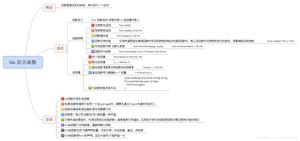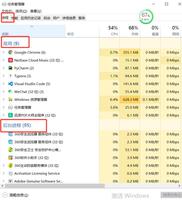Python lxml模块的基本使用方法分析
本文实例讲述了Python lxml模块的基本使用方法。分享给大家供大家参考,具体如下:
1 lxml的安装
安装方式:pip install lxml
2 lxml的使用
2.1 lxml模块的入门使用
导入lxml 的 etree 库 (导入没有提示不代表不能用)
from lxml import etree
利用etree.HTML,将字符串转化为Element对象,Element对象具有xpath的方法,返回结果的列表,能够接受bytes类型的数据和str类型的数据
html = etree.HTML(text)
ret_list = html.xpath("xpath字符串")
把转化后的element对象转化为字符串,返回bytes类型结果 etree.tostring(element)
假设我们现有如下的html字符换,尝试对他进行操作
<div> <ul>
<li class="item-1"><a href="link1.html" rel="external nofollow" rel="external nofollow" rel="external nofollow" rel="external nofollow" >first item</a></li>
<li class="item-1"><a href="link2.html" rel="external nofollow" rel="external nofollow" rel="external nofollow" rel="external nofollow" rel="external nofollow" rel="external nofollow" rel="external nofollow" >second item</a></li>
<li class="item-inactive"><a href="link3.html" rel="external nofollow" rel="external nofollow" rel="external nofollow" rel="external nofollow" rel="external nofollow" rel="external nofollow" rel="external nofollow" >third item</a></li>
<li class="item-1"><a href="link4.html" rel="external nofollow" rel="external nofollow" rel="external nofollow" rel="external nofollow" rel="external nofollow" rel="external nofollow" rel="external nofollow" >fourth item</a></li>
<li class="item-0"><a href="link5.html" rel="external nofollow" rel="external nofollow" rel="external nofollow" rel="external nofollow" rel="external nofollow" rel="external nofollow" rel="external nofollow" >fifth item</a> # 注意,此处缺少一个 </li> 闭合标签
</ul> </div>
from lxml import etree
text = ''' <div> <ul>
<li class="item-1"><a href="link1.html" rel="external nofollow" rel="external nofollow" rel="external nofollow" rel="external nofollow" >first item</a></li>
<li class="item-1"><a href="link2.html" rel="external nofollow" rel="external nofollow" rel="external nofollow" rel="external nofollow" rel="external nofollow" rel="external nofollow" rel="external nofollow" >second item</a></li>
<li class="item-inactive"><a href="link3.html" rel="external nofollow" rel="external nofollow" rel="external nofollow" rel="external nofollow" rel="external nofollow" rel="external nofollow" rel="external nofollow" >third item</a></li>
<li class="item-1"><a href="link4.html" rel="external nofollow" rel="external nofollow" rel="external nofollow" rel="external nofollow" rel="external nofollow" rel="external nofollow" rel="external nofollow" >fourth item</a></li>
<li class="item-0"><a href="link5.html" rel="external nofollow" rel="external nofollow" rel="external nofollow" rel="external nofollow" rel="external nofollow" rel="external nofollow" rel="external nofollow" >fifth item</a>
</ul> </div> '''
html = etree.HTML(text)
print(type(html))
handeled_html_str = etree.tostring(html).decode()
print(handeled_html_str)
输出为
<class 'lxml.etree._Element'>
<html><body><div> <ul>
<li class="item-1"><a href="link1.html" rel="external nofollow" rel="external nofollow" rel="external nofollow" rel="external nofollow" >first item</a></li>
<li class="item-1"><a href="link2.html" rel="external nofollow" rel="external nofollow" rel="external nofollow" rel="external nofollow" rel="external nofollow" rel="external nofollow" rel="external nofollow" >second item</a></li>
<li class="item-inactive"><a href="link3.html" rel="external nofollow" rel="external nofollow" rel="external nofollow" rel="external nofollow" rel="external nofollow" rel="external nofollow" rel="external nofollow" >third item</a></li>
<li class="item-1"><a href="link4.html" rel="external nofollow" rel="external nofollow" rel="external nofollow" rel="external nofollow" rel="external nofollow" rel="external nofollow" rel="external nofollow" >fourth item</a></li>
<li class="item-0"><a href="link5.html" rel="external nofollow" rel="external nofollow" rel="external nofollow" rel="external nofollow" rel="external nofollow" rel="external nofollow" rel="external nofollow" >fifth item</a>
</li></ul> </div> </body></html>
可以发现,lxml确实能够把确实的标签补充完成,但是请注意lxml是人写的,很多时候由于网页不够规范,或者是lxml的bug,即使参考url地址对应的响应去提取数据,任然获取不到,这个时候我们需要使用etree.tostring的方法,观察etree到底把html转化成了什么样子,即根据转化后的html字符串去进行数据的提取。
2.2 lxml的深入练习
接下来我们继续操作,假设每个class为item-1的li标签是1条新闻数据,如何把这条新闻数据组成一个字典
from lxml import etree
text = ''' <div> <ul>
<li class="item-1"><a href="link1.html" rel="external nofollow" rel="external nofollow" rel="external nofollow" rel="external nofollow" >first item</a></li>
<li class="item-1"><a href="link2.html" rel="external nofollow" rel="external nofollow" rel="external nofollow" rel="external nofollow" rel="external nofollow" rel="external nofollow" rel="external nofollow" >second item</a></li>
<li class="item-inactive"><a href="link3.html" rel="external nofollow" rel="external nofollow" rel="external nofollow" rel="external nofollow" rel="external nofollow" rel="external nofollow" rel="external nofollow" >third item</a></li>
<li class="item-1"><a href="link4.html" rel="external nofollow" rel="external nofollow" rel="external nofollow" rel="external nofollow" rel="external nofollow" rel="external nofollow" rel="external nofollow" >fourth item</a></li>
<li class="item-0"><a href="link5.html" rel="external nofollow" rel="external nofollow" rel="external nofollow" rel="external nofollow" rel="external nofollow" rel="external nofollow" rel="external nofollow" >fifth item</a>
</ul> </div> '''
html = etree.HTML(text)
#获取href的列表和title的列表
href_list = html.xpath("//li[@class='item-1']/a/@href")
title_list = html.xpath("//li[@class='item-1']/a/text()")
#组装成字典
for href in href_list:
item = {}
item["href"] = href
item["title"] = title_list[href_list.index(href)]
print(item)
输出为
{'href': 'link1.html', 'title': 'first item'}
{'href': 'link2.html', 'title': 'second item'}
{'href': 'link4.html', 'title': 'fourth item'}
假设在某种情况下,某个新闻的href没有,那么会怎样呢?
from lxml import etree
text = ''' <div> <ul>
<li class="item-1"><a>first item</a></li>
<li class="item-1"><a href="link2.html" rel="external nofollow" rel="external nofollow" rel="external nofollow" rel="external nofollow" rel="external nofollow" rel="external nofollow" rel="external nofollow" >second item</a></li>
<li class="item-inactive"><a href="link3.html" rel="external nofollow" rel="external nofollow" rel="external nofollow" rel="external nofollow" rel="external nofollow" rel="external nofollow" rel="external nofollow" >third item</a></li>
<li class="item-1"><a href="link4.html" rel="external nofollow" rel="external nofollow" rel="external nofollow" rel="external nofollow" rel="external nofollow" rel="external nofollow" rel="external nofollow" >fourth item</a></li>
<li class="item-0"><a href="link5.html" rel="external nofollow" rel="external nofollow" rel="external nofollow" rel="external nofollow" rel="external nofollow" rel="external nofollow" rel="external nofollow" >fifth item</a>
</ul> </div> '''
结果是
{'href': 'link2.html', 'title': 'first item'}
{'href': 'link4.html', 'title': 'second item'}
数据的对应全部错了,这不是我们想要的,接下来通过2.3小节的学习来解决这个问题
2.3 lxml模块的进阶使用
前面我们取到属性,或者是文本的时候,返回字符串 但是如果我们取到的是一个节点,返回什么呢?
返回的是element对象,可以继续使用xpath方法,对此我们可以在后面的数据提取过程中:先根据某个标签进行分组,分组之后再进行数据的提取
示例如下:
from lxml import etree
text = ''' <div> <ul>
<li class="item-1"><a>first item</a></li>
<li class="item-1"><a href="link2.html" rel="external nofollow" rel="external nofollow" rel="external nofollow" rel="external nofollow" rel="external nofollow" rel="external nofollow" rel="external nofollow" >second item</a></li>
<li class="item-inactive"><a href="link3.html" rel="external nofollow" rel="external nofollow" rel="external nofollow" rel="external nofollow" rel="external nofollow" rel="external nofollow" rel="external nofollow" >third item</a></li>
<li class="item-1"><a href="link4.html" rel="external nofollow" rel="external nofollow" rel="external nofollow" rel="external nofollow" rel="external nofollow" rel="external nofollow" rel="external nofollow" >fourth item</a></li>
<li class="item-0"><a href="link5.html" rel="external nofollow" rel="external nofollow" rel="external nofollow" rel="external nofollow" rel="external nofollow" rel="external nofollow" rel="external nofollow" >fifth item</a>
</ul> </div> '''
html = etree.HTML(text)
li_list = html.xpath("//li[@class='item-1']")
print(li_list)
结果为:
[<Element li at 0x11106cb48>, <Element li at 0x11106cb88>, <Element li at 0x11106cbc8>]
可以发现结果是一个element对象,这个对象能够继续使用xpath方法
先根据li标签进行分组,之后再进行数据的提取
from lxml import etree
text = ''' <div> <ul>
<li class="item-1"><a>first item</a></li>
<li class="item-1"><a href="link2.html" rel="external nofollow" rel="external nofollow" rel="external nofollow" rel="external nofollow" rel="external nofollow" rel="external nofollow" rel="external nofollow" >second item</a></li>
<li class="item-inactive"><a href="link3.html" rel="external nofollow" rel="external nofollow" rel="external nofollow" rel="external nofollow" rel="external nofollow" rel="external nofollow" rel="external nofollow" >third item</a></li>
<li class="item-1"><a href="link4.html" rel="external nofollow" rel="external nofollow" rel="external nofollow" rel="external nofollow" rel="external nofollow" rel="external nofollow" rel="external nofollow" >fourth item</a></li>
<li class="item-0"><a href="link5.html" rel="external nofollow" rel="external nofollow" rel="external nofollow" rel="external nofollow" rel="external nofollow" rel="external nofollow" rel="external nofollow" >fifth item</a>
</ul> </div> '''
#根据li标签进行分组
html = etree.HTML(text)
li_list = html.xpath("//li[@class='item-1']")
#在每一组中继续进行数据的提取
for li in li_list:
item = {}
item["href"] = li.xpath("./a/@href")[0] if len(li.xpath("./a/@href"))>0 else None
item["title"] = li.xpath("./a/text()")[0] if len(li.xpath("./a/text()"))>0 else None
print(item)
结果是:
{'href': None, 'title': 'first item'}
{'href': 'link2.html', 'title': 'second item'}
{'href': 'link4.html', 'title': 'fourth item'}
前面的代码中,进行数据提取需要判断,可能某些一面不存在数据的情况,对应的可以使用三元运算符来解决
PS:这里再为大家提供几款关于xml操作的在线工具供大家参考使用:
在线XML/JSON互相转换工具:
以上是 Python lxml模块的基本使用方法分析 的全部内容, 来源链接: utcz.com/z/353772.html




